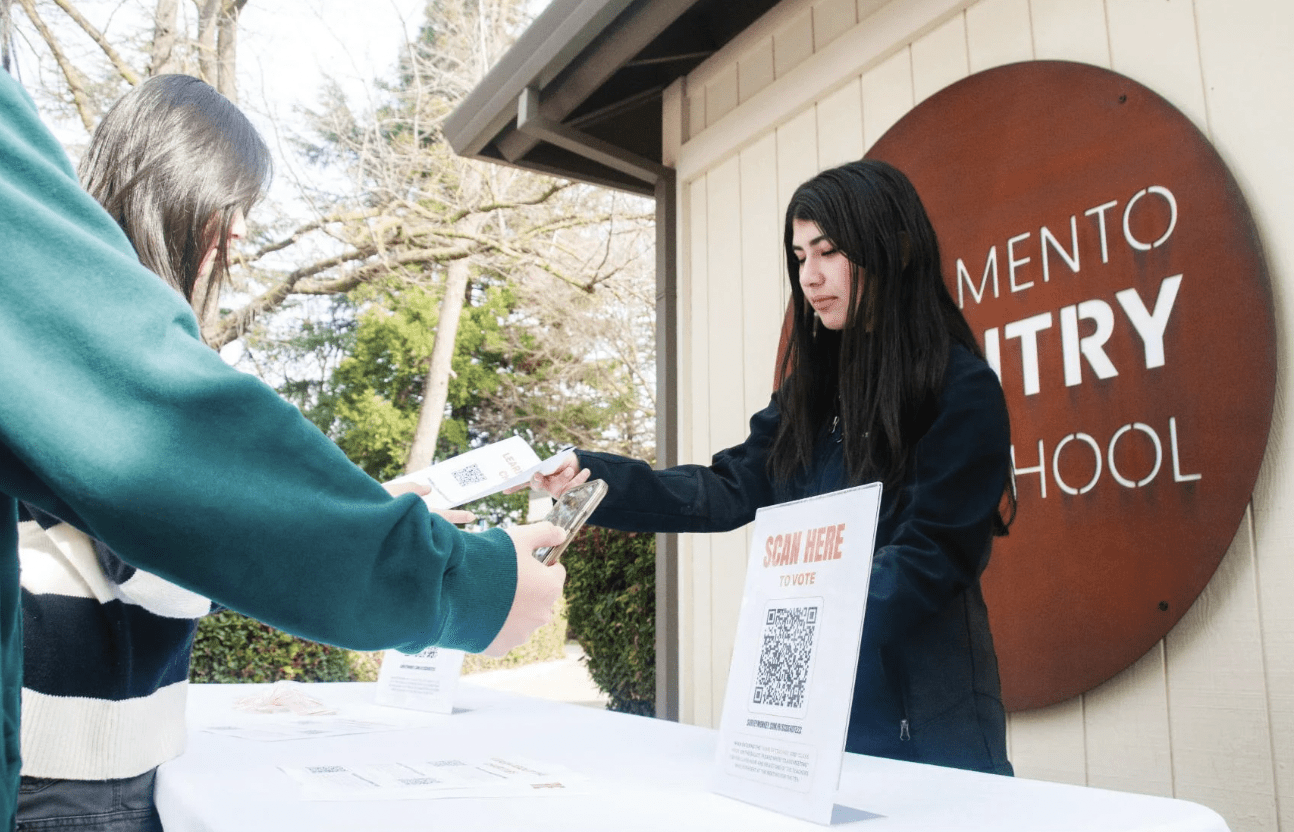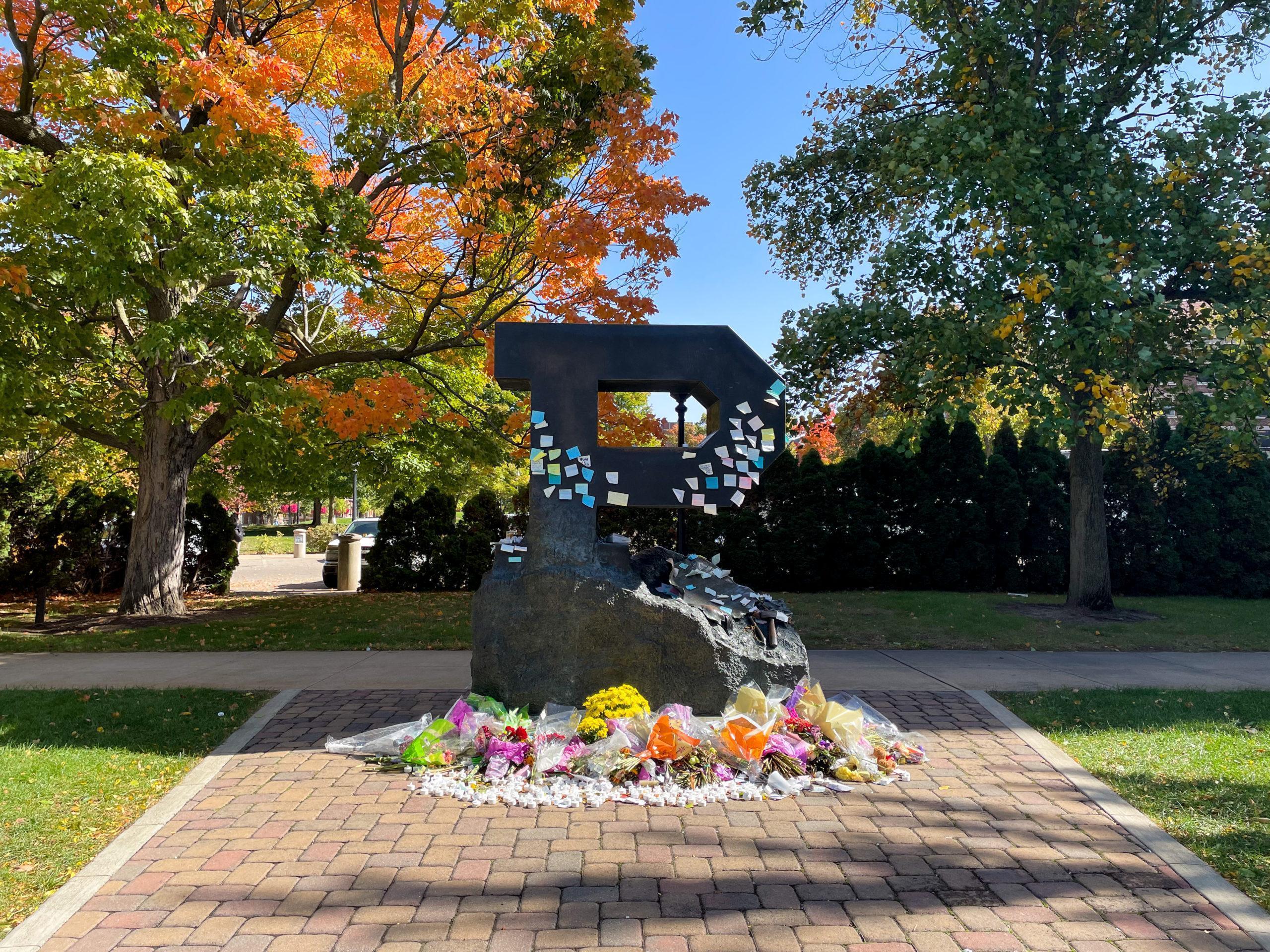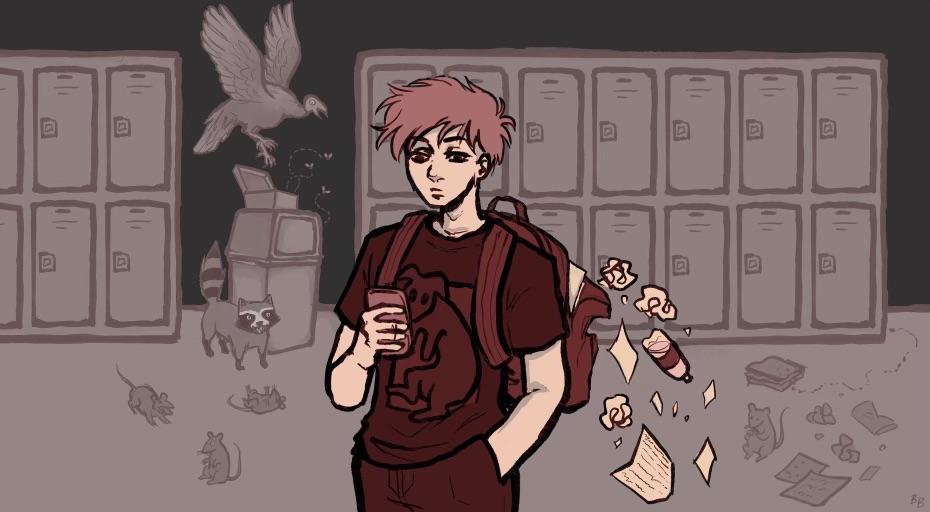Throughout the week of Nov. 27, Sacramento Country Day high schoolers mingled in the quad, sporting vibrant red “I VOTED” stickers. The stakes of this election did not involve class representatives, however, but instead a variety of charitable organizations.
Students had the option to choose between three different charities: The Lead Exposure Elimination Project, Malaria Consortium SMC Programme and The Animal Charity Evaluators Recommended Charity Fund.
All week students were presented the opportunity to cast a vote for a donation to the charity they felt supported the best cause. For each vote, Giving What We Can (GWWC) donated $2 and Country Day matched it, making each vote worth $4. Giving What We Can is a charitable organization that is “dedicated to making a positive impact in the world through charitable giving,” according to their website.
Junior Saheb Gulati initially brought Charity Voting to Country Day. Organized by GWWC, Charity Voting is designed to encourage critical thinking and the effective utilization of resources to make a positive impact.
“The goal is to have high school students research, discuss and ultimately reflect on three different charities before they vote,” Gulati said.
From a larger perspective, Gulati wishes for the students to be able to have meaningful discussions and think in an action-oriented direction to make a difference in the world with their resources in the future.
Country Day’s involvement with Charity Voting came as a result of Gulati’s close ties with GWWC, as well as the Student Philanthropy Ambassadors at Country Day, a team that promotes philanthropy at Country Day.
Gulati proposed the idea of bringing Charity Voting to Country Day to Rachelle Doyle, the Director of Advancement, and after applying, GWWC agreed to work with Country Day.
Gulati created a student Charity Elections team consisting of senior Liam Kaschner, junior Ceci DeBerry, sophomore Zema Nasirov and freshman Justin Lawson.
The team helped educate students on the charities with slides and discussions and also encouraged them to vote by running election tables and by giving out incentives like candy and snacks.
“From our perspective, it comes down to a really simple model. You spend a minute of your time voting and $4 goes to the effective charity that most people choose. It’s impactful,” Gulati said.
This event aligns with the ideas of effective altruism, which is a philosophy based on how people can use their resources to achieve the most benefit.
“It really comes down to how we can share the resources and the money that we have, to give back in the way that does the most good possible,” Gulati said. “When you are donating your money to charities, it becomes really important to think about how we can use our resources to do the most with that amount of money.”
The Lead Exposure Elimination Project focuses on reducing childhood lead poisoning in low and middle income countries.
According to co-executive director Lucia Coulter, lead exposure is a large but neglected problem and affects roughly one in three children, or 800 million children worldwide. It causes physical and behavioral problems that can reduce education attainment and cause major health issues later in life.
This Project aims to eliminate lead paint in low and middle income countries. They analyze paints available on the market and share the information with health ministries to raise awareness and increase regulation.
The Malaria Consortium aims to reduce malaria risks in children in the Sahel region of Africa. The program works with local governments to provide SMC, or seasonal malaria chemoprevention, for children once per month and has since lowered malaria cases by about 75%.
With lower cases, governments can spend money on agriculture and infrastructure instead of on treating malaria, which helps raise the country’s economy.
So far, SMC programs in total have protected about 12 million children and more can be protected with sufficient funding.
The Animal Charity Evaluators are an organization that makes it easier for volunteers and donors to select an animal charity to support.
It evaluates the cause, effectiveness and quality of work of animal charities and lists the most impactful animal charities. It also advocates for lesser-known or scarcely funded charities that show significant impact or effectiveness.
Each grade was shown informational videos during weekly class meetings about the three charities, and students were encouraged to attend additional sessions at flex. There were also flyers with QR codes available for additional information.
DeBerry felt that student outreach was a particularly strong area for the team.
“I think we were really successful in rallying students to vote the day of,” DeBerry said.
122 out of 169 high school students voted in the event. In total, the Lead Exposure Elimination Project received $296 (74 votes), the Animal Charity Evaluators received $144 (36 votes), and the Malaria Consortium received $48 (12 votes).
According to Doyle, the donations to the Malaria Consortium SMC Programme can help protect 42 children from malaria this season, and a staggering number of students responded that they “voted for a cause they believe in” in the survey following the vote.
Gulati said the Charity Elections team experienced several difficulties when organizing this event.
For example, they found that students do not want to attend events that are not mandatory and take up their limited free time, and this became a large obstacle in informing students about the effective charities.
“I think the trouble was where we found time for those discussions. We talked about ideas like a mandatory lunch or flex session, kind of like drug and alcohol education,” Gulati said. “We settled on a class meeting and that obviously is a tight slot, only 18 minutes. It ideally would have been like part of a class or something but it’s obviously hard to find that time.”
To emphasize the presentation and discussion side of the educated voting program, the Charity Election team brought cookies and baked goods to the flex sessions. However, the majority of voters learned about the charities on the day of the election.
While Gulati believed they could have done more to ensure attendance, he was still happy that the team had the opportunity to show the videos to students at class meetings and motivated them to vote.




